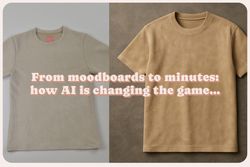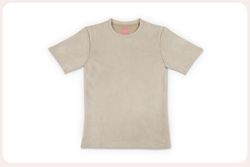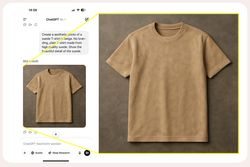From moodboards to minutes: how AI is changing the game…

Back in 2016, I co-founded aeuoeu—a clothing brand I started with a close friend. From the beginning, we knew that branding and visuals were everything. We didn’t just want to make cool pieces—we wanted the photos, the mood, the story around it all to feel just right. So we spent most of our time obsessing over the look and feel of everything we put out.
We received the first samples of our custom-made suede T-shirts. And once they arrived, the next mission was clear: organize a shoot. That meant creating moodboards, locking in a location, figuring out lighting, asking friends and family to help out, and juggling calendars.
It took two weeks of planning, a full day to shoot, and another two weeks just to edit the photos. The Photoshop files were massive. We spent hours tweaking shadows, balancing colors, and trying to make sure everything had the vibe we wanted.
Our process involved placing the suede T-shirts on a white surface and using tape to ensure the sleeves were perfectly positioned for the photo:
And here's one of the final photos from that shoot:
[Bonus] Here’s a behind-the-scenes video that sums up the vibe of those early days ☀️:
Now fast forward to this week with OpenAI's new image generation tool.
The first prompt I typed into OpenAI’s image generation tool: “Create an aesthetic photo of a suede T-shirt in beige. No branding, plain T-shirt made from high quality suede. Show the beautiful detail of the suede.”—and within 15 seconds, it gave me an image that looked almost exactly like what we tried to create back then. The vibe, the mood, the lighting… all there.
Here’s the AI-generated version:
That moment honestly blew my mind, and not because it was perfect (though it was close), but because it took one prompt and only 15 seconds. What used to take nearly a month—coordinating people, gear, edits—is now something you can prototype and explore instantly.
If you’re not already playing around with AI tools, you really should. Not just because it’s trendy—but because it changes what’s possible. It gives you a head start. It turns big ideas into something tangible, fast.
And honestly, if there’s something you’ve been meaning to start—a brand, a project, a small side hustle—this is the time. The tools are here. The excuses are gone. Just start.